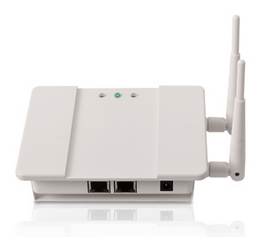
The case of Voice over IP is even more special. Firewalls are generally based on NAT but, unfortunately, VoIP connections are incompatible with NAT. A possible solution would be to open exceptions in the NAT Firewall for Voice over IP. This this is not a good idea, though, because it compromises security and does not protect against Denial of Service and intrusion attacks. Intrusion control deserves special mention, not only at the network layer (which a Firewall could perform) but, primarily, at the application layer, aimed at ensuring legitimate call traffic, avoiding attacks, intrusions and fraud. On top of this and to make matters worse, the VoIP sessions are created randomly as calls are established, further complicating control.
A new element is required to address these risks. This element should monitor and be actively involved in the VoIP sessions established between the internal and external network, ensuring that these connections are properly established and that they are legitimate, secure and reliable. This element is the Session Border Controller (SBC).
What is SBC?
An SBC is basically a Firewall for voice traffic and its job is to ensure that the sessions are legitimate, detecting and blocking potential attacks and intrusions. Another important safety feature (similar to what a Firewall does for data services) is concealing voice services on the internal network from the outside. To perform all of these functions, the SBC sits, like the Firewall, on the border between the internal and external network (hence the name “Border Session Controller”), but at a more internal layer than the Firewall (usually in an intermediate network between the Firewall and the internal network, or DMZ -“Demilitarized Zone” -).
The SBC doesn’t just monitor and control sessions between the internal and external network, it reconstructs them in order to have complete control. That is, when a session is established between the internal and external network, two sessions are actually established, one from the internal element to the SBC, and the other from the SBC to the external element; with the SBC negotiating the call parameters to both ends separately. Not only does this allow for full control of the sessions (who can connect, to where, when, how, detection of attacks and intrusions…) but it also conceals the internal network from the outside. This is a basic SBC behavior that is known as Back to Back User Agent (B2BUA).
Characteristics and advantages
While the SBC’s main feature is usually security, it is by no means the only one. The SBC is usually responsible for the following functions, among others:
- Interoperability: Establishing sessions even with internal and external network elements that have different signaling (due to the use of different SIP versions or signaling protocols or because of additional security requirements on one side)
- Numbering plan management: Allowing legitimate connections and blocking attacks and intrusions
- Transcoding: Converting incompatible codecs
- Admission Control: Limiting the number of sessions established to avoid exceeding the WAN line capacity
- Remote user connectivity: For example, using VPNs
- Quality of Service Management
- Others…
SBCs arose out of need, catching standards bodies off balance, which created some ambiguity about their roles and limits. Initially SBCs were dedicated devices located at the border between provider networks and their customers or the Internet, evolving towards virtualized networks at times integrated with Firewall and routers. Today it is common to deploy SBC functions even in remote areas to protect the central office’s internal network, especially where there is a direct connection to the internet.
SBCs in Teldat
Teldat routers implement an advanced, comprehensive SBC using various functions included in the software, such as the B2BUA functionality that allows complete control of Voice over IP sessions established between the internal and external network, ensuring interoperability and security, together with other security features like IPSec and securitization of RTSP, TLS and SRTP voice sessions, plus complete control of the IP Quality of Service, Admission Control for VoIP calls based on various parameters, routing table/call screening or codec selection.

























